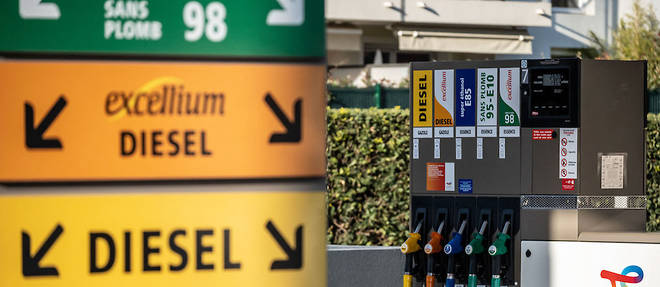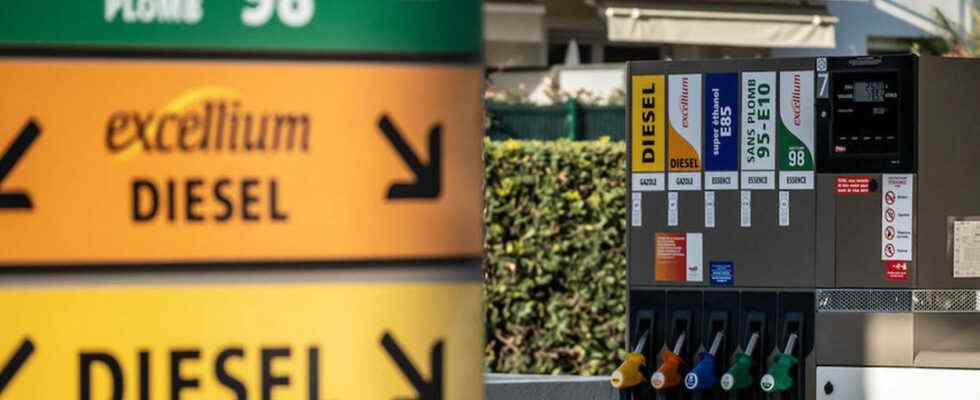The rebate at the pump, financed by the State, is divided by three on November 16. A first step before the end of the device, replaced on 1er January.
By Thibaut Deleaz

© XAVIER DUVOT / Hans Lucas via AFP
Published on
Lhe beginning of the end for the fuel discount. This Wednesday, November 16, the rebate financed by the State is divided by three: it goes from 30 to 10 centimes per litre. A first step before the final disappearance, on December 31, of this measure which entered into force on 1er last April – the discount was 18 cents until the beginning of September. The reduction granted by TotalEnergies in its stations, in parallel with government aid, is also falling: it goes from 20 to 10 cents, and will also end on December 31.
This Wednesday, prices at the pump will therefore jump by 20 cents (30 at TotalEnergies). The previous week, unleaded 95 was, on average at 1.62 euros (discount included), diesel at 1.80 euros, indicates the Ministry of Ecological Transition. Service stations were stormed by motorists wishing to take advantage of low prices one last time, 13% of them were even dry on Monday. And after ?
READ ALSOHow Total defends its windfall profits
Why is the government phasing out the fuel discount?
Although in force for seven months now, the direct aid mechanism on prices at the pump is an emergency measure in the face of the explosion in prices since the war in Ukraine. A device designed to be simple and quick to set up, without any conditions. Whether it was a modest worker dependent on his car for work or a well-to-do owner of a very gas-guzzling SUV, everyone was helped on the same level.
“We have to get out of it gradually, because we are not going to live all the time with a rebate on fuel paid for by the taxpayer”, explained the Minister of Transport Clément Beaune this Tuesday, November 15 on Europe 1. aid should have dropped from 1er November, but a two-week deadline had been granted to let the shortages linked to the strikes in the refineries pass. The Minister now believes that the situation is better. “There is never a perfect moment, so you have to take responsibility. »
READ ALSOWhy the tariff shield becomes untenable
What help for fuels in 2023?
Instead of the current measure, the government wants a more targeted device, targeting “big rollers”, from 1er January. A month and a half before the deadline, however, the outlines are still unclear. The parameters must be defined “in a few days”, indicates Clément Beaune, who has sown some clues. The big rollers will be “people who have a car and use it regularly”.
This aid will also be subject to income conditions, but the thresholds have not yet been defined. Gabriel Attal, Minister of Action and Public Accounts, also specified that this aid would target “workers”. The terms of payment are no more established than the eligibility criteria, but the government wants a device “easy to access”. One certainty: you will have to apply for it yourself on an online platform.
How much does government fuel subsidy cost?
In 2022, the State will have devoted approximately 7.5 billion euros to its rebate at the pump. A certain cost for public finances, partly offset by additional revenue, fuel price increases having collected more taxes. An “assumed” gesture, says Clément Beaune, to “avoid fuel being too expensive when 85% of trips are still made by car”. For the new system of 2023, the government has provided an envelope of around 1.5 billion euros.
